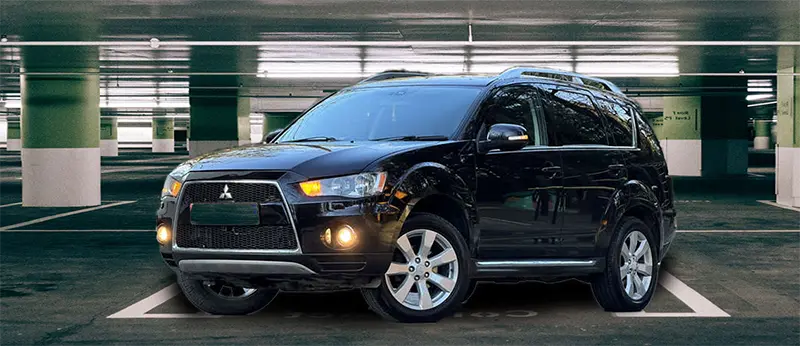News: The second generation of the Mitsubishi Outlander Review (2007-2013)
Mitsubishi's collaboration with the French group PSA (Peugeot-Citroen) in Europe and the adoption of a Volkswagen diesel engine marked significant milestones in the development of the second-generation Outlander.
After a successful five-year run, Mitsubishi bid farewell to the first-generation Outlander and introduced the world to its successor in October 2006. Unlike its predecessor, the second-generation Outlander was designed as a global vehicle, tailored to meet the diverse needs of different markets. Notably, Mitsubishi opted to discontinue the Airtrek nameplate in Japan, adopting the Outlander moniker used worldwide.

The Outlander's exterior design showcased a harmonious blend of angular lines and curved panels, creating a distinctive aesthetic. Notable features included glass-covered headlights, a split grille, and, depending on the trim level, an aluminum shield beneath the apron for added protection of the engine and gearbox. At the rear, Mitsubishi incorporated clear taillights with LED-like lamps, complementing the modern and sleek look. A unique split opening system for the tailgate added practicality, with the top portion lifting upwards and the bottom section lowering when opened.

Stepping inside, the Outlander provided seating for up to seven occupants in a versatile 2-3-2 configuration. While the third row may have lacked the spaciousness of the front and second rows, it still accommodated two adults comfortably for shorter journeys. The interior design drew inspiration from the Lancer, featuring a dashboard with a binocular-style instrument cluster. Depending on the transmission, drivers could enjoy the convenience of paddle shifters for automatic gearbox versions or a rotary knob for seamlessly switching between front-wheel-drive and all-wheel-drive modes, with an option for a locking center differential.
If you can't find information about Mitsubishi Outlander repair? You can read here Service Manual.
Beneath the hood, Mitsubishi offered a choice of three engines, including two gasoline variants and a notable addition: a 2.0-liter TDI turbodiesel engine sourced from Volkswagen. This diesel powerplant added another dimension to the Outlander's performance, delivering a balance of power and efficiency.
Overall, strategic partnerships of Mitsubishi and innovative engineering decisions contributed to the success of the second-generation Outlander, making it a versatile and competitive option in the crossover market.
 Go anywhere in comfort: The 2024 Subaru Outback Touring
Go anywhere in comfort: The 2024 Subaru Outback Touring
My family's history with Outbacks runs deep, starting with our 2017 Premium model and continuing with our current 2022 Wilderness edition. These cars have been more than just modes of transportation ...
Other materials:
Home Page (Radio with Touchscreen)
Touchscreen Buttons
Touchscreen buttons show on the screen when available. When a function is unavailable,
the button may gray out. When a function is selected, the button may highlight.
Home Page Features
Press to go to the Home Page.
audio: Press to select AM, FM, SiriusXM
(if equipped ...
Front Side Door Lock Cylinder Opening Cover Replacement
Front Side Door Lock Cylinder Opening Cover Replacement
Callout
Component Name
1
Front Side Door Lock Cylinder Opening Cover
Procedure
Remove the front side door lock cylinder, Do Not remove the outside
door ...
Instrument Panel Accessory Upper Trim Plate Replacement
Instrument Panel Accessory Upper Trim Plate Replacement
Callout
Component Name
Preliminary Procedure
Remove the instrument panel center molding. Refer to Instrument Panel
Center Molding Replacement.
1
...
0.0052
